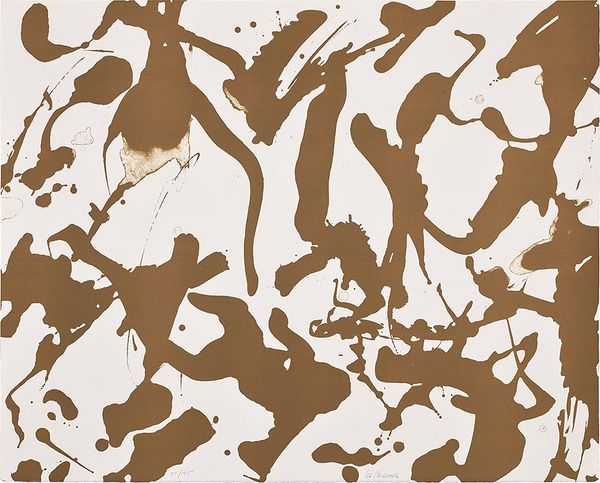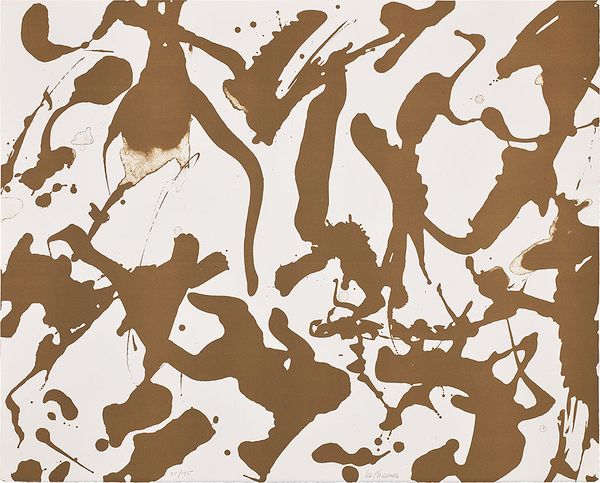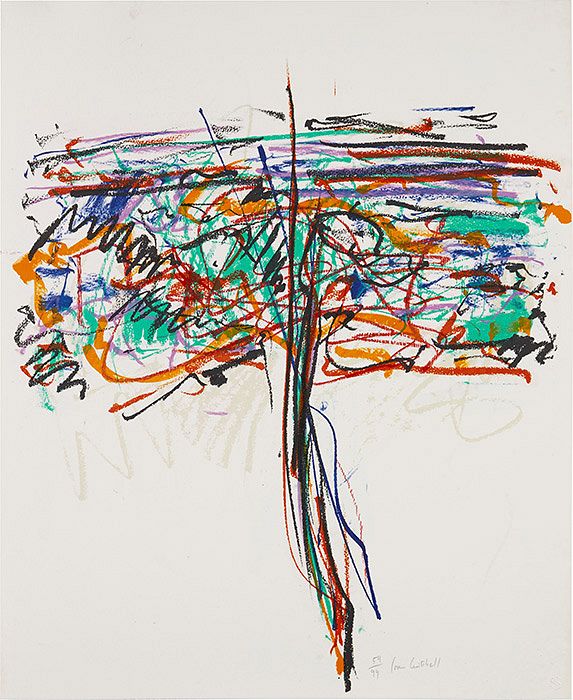Lee Krasner, Untitled, from Peace Portfolio I, 1969–70, lithograph. Editions & Works on Paper.
Featured in our Editions & Works on Paper auction on 27 June in New York are seven women artists who reinvented abstract art as we know it, from the 1940s to the current moment.
In this piece, we look at pioneers of Gestural Abstraction:
Lee Krasner
Joan Mitchell
Pat Steir
In another, we cover Geometric Abstraction (read now):
Anni Albers
Agnes Martin
Jo Baer
Carmen Herrera
Some in our selection were unjustly eclipsed from the history of art until only recently because they were women. Others were the rare exceptions who were able to achieve critical attention and acclaim on par with their male contemporaries. All are now recognized for their contributions in advancing abstract art through some of most important movements in the 20th century. And, happily, all made prints.
Lee Krasner
Lee Krasner, Untitled, from Peace Portfolio I, 1969–70, lithograph. Editions & Works on Paper.
One of the leading artists of the first generation of Abstract Expressionists, Lee Krasner (1908–1984) triumphed through an ambitious 50-year career of endless reinvention and discovery. Increasingly, historians champion her contributions to the abstract expressionist movement — but it took years for her to come out from under the shadow of her husband, Jackson Pollock.
Only recently, influential critic Carter Ratcliffe has argued that Krasner invented the all-over style “every bit as much as Pollock did.” Her Little Image paintings of 1946 to 1949 break down the hierarchies of line, shape, and color to achieve a continuous flow of movement in thickly dabbed, calligraphic passages that push and pull against the picture plane. We can now appreciate their importance in relation to works by Jackson Pollock, Adolph Gottlieb, Mark Tobey, and Bradley Walker Tomlin. Important milestone exhibitions at the Whitechapel Gallery in London in 1965 and the Whitney Museum in New York in 1973 signaled the watershed nature of her compositions.
Her lithograph Untitled is a buoyant, airy composition that distills her signature gestural style. It is from the legendary Peace Portfolio I that was published by the Academic and Professional Action Committee for a Responsible Congress in 1970 to raise funds for “the politics of peace” and included some of the era’s biggest names.
Joan Mitchell
Joan Mitchell, Tree I, 1990, lithograph. Editions & Works on Paper.
A second-generation member of the New York School, Joan Mitchell (1925–1992) was one of only a few women in that era to achieve critical acclaim. Her work exemplifies the active gestural physicality of Abstract Expressionism, while her vivid palette and love of nature infuses her style with a rare lyrical grace.
Mitchell abandoned the human figure in 1950 and moved into a studio in Greenwich Village to embark on a groundbreaking exploration of abstraction that earned her the respect of abstract expressionists including Willem de Kooning, Franz Kline, and Philip Guston — with whom she would develop formative dialogues over the years. The group’s legendary Artists’ Club was heavily male-dominated; she was nonetheless invited to join and was soon after included in Leo Castelli’s landmark Ninth Street Show of 1951, which helped to put Abstract Expressionism on the map. In 1959, she resettled for the duration of her career in France, where her unique gestural style bloomed under the influence of the Impressionists and Post-Impressionists.
Mitchell’s abiding passion for the natural world weaves through her oeuvre. The tree, for her, has remained an important compositional focus of her artworks, including her earlier 1960s Cypress series and her paintings of the mid 1970s, which often allude to a solemn tree within a vast landscape. On offer in our sale, her lithograph Tree I, 1990 is a masterfully balanced and lively orchestration of bright colors and sweeping gestures that captures the feeling of joie de vivre.
Pat Steir
Pat Steir, From the Boat: Constellation, 2002, etching and aquatint. Editions & Works on Paper.
Five decades of achievement have propelled Pat Steir (1938–) to the forefront of contemporary abstraction in both painting and printmaking. Coming out of conceptual art and minimalism, Steir first achieved acclaim in the 1970s for her works that interrogated the nature of representation. In the mid-1980s, she transitioned to a more spiritual approach, evolving her signature Waterfall technique, which combined her meticulous brushwork with multiple layers of drips and pours to capture the beauty of the cosmic sublime.
Steir harnesses the power of action painting along with the idea of a metaphysical harmony with nature. She finds inspiration in Chinese ink paintings and Zen Buddhist and Daoist philosophies. Among her formative influences are the painter Agnes Martin — a close friend since 1970, with whom she long shared a kindred interest in the Transcendental qualities of art — and the composer John Cage, who encouraged her to embrace the creative power of chance in paint drips and spatters.
Steir views printmaking as a core component of her practice. From the Boat is a series of four etchings Steir began in 1991 that explores the shimmering stillness of nature. From the Boat: Constellation from 2002 brings into focus the elemental purity of the night sky.
Recommended Reading



